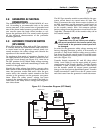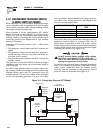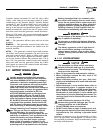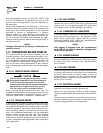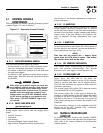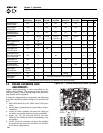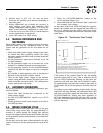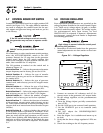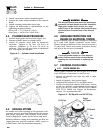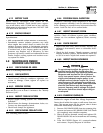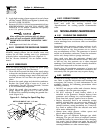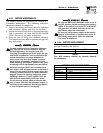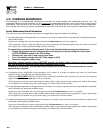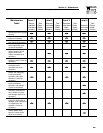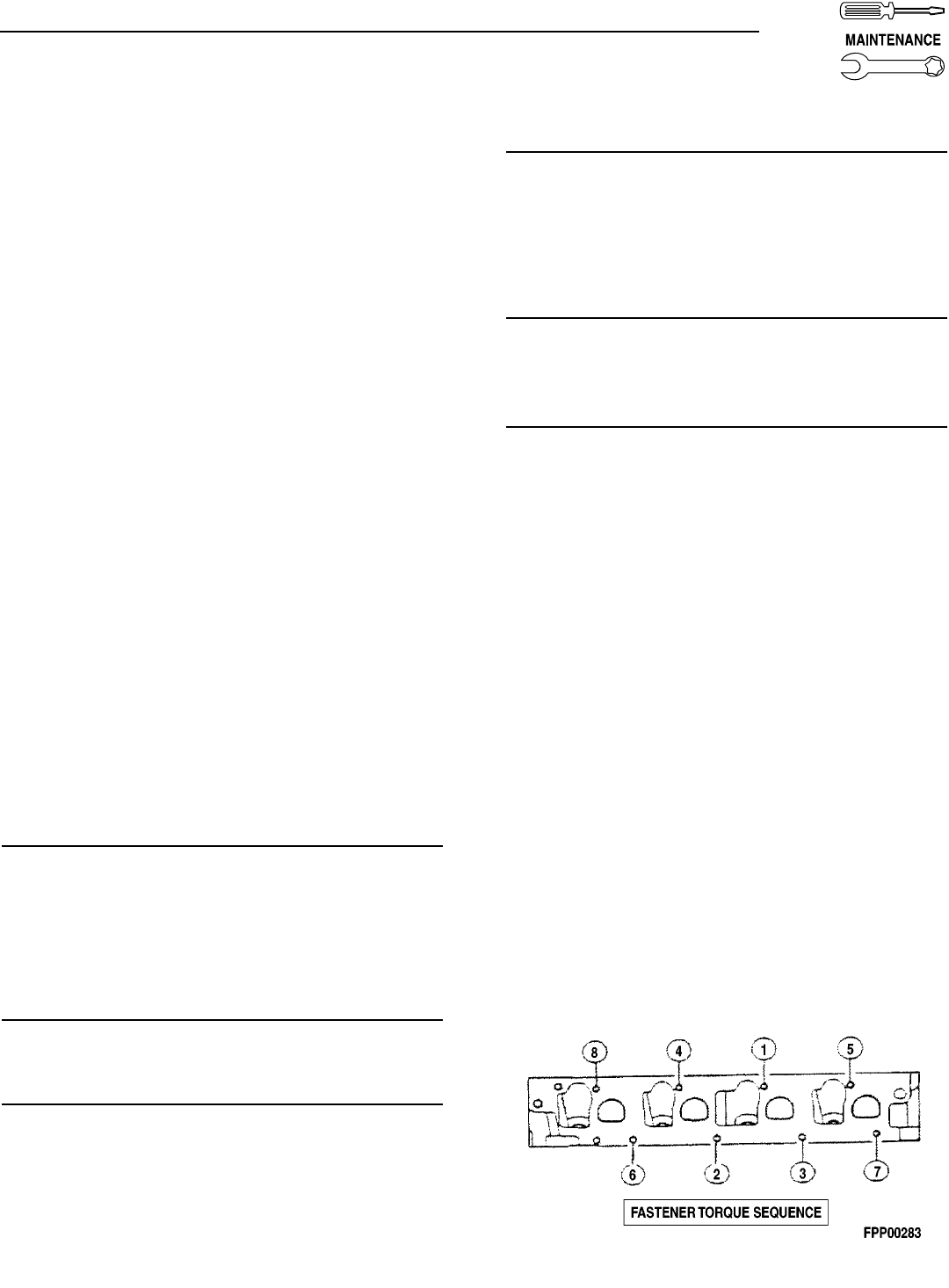
19
7. Turn the voltage regulator’s VOLTAGE ADJUST
pot to obtain a line-to-line voltage of:
A. 240 VAC if the generator has been configured for
60 Hertz operation.
B. 200 VAC if the generator has been configured for
50 Hertz operation.
8. If the RED REGULATOR LED is flashing, adjust
the STABILITY pot in either direction until the
flashing stops.
9. Apply an electrical load and check the engine
speed recovery.
A. Adjust the UNDERFEQUENCY ADJUST pot
CCW to reduce load during engine recovery.
B. For flat regulation (no voltage decrease as fre-
quency drops) set the UNDERFREQUENCY
ADJUST pot fully CW.
C. To obtain a constant voltage regulation as fre-
quency decreases, set the UNDERFREQUENCY
ADJUST pot fully CCW.
10. With the electrical load still applied, check the
REGULATOR LED for flashing. If the LED is
flashing, adjust the STABILITY pot until the flash-
ing stops.
11. If better response is needed, adjust the GAIN pot
clockwise (CW) as needed. Then (if needed) cor-
rect for stability by adjusting the STABILITY pot.
12. Turn OFF the electrical loads.
13. Verify that all the voltage regulator’s LED’s are
ON.
14. Turn OFF the generator.
4.1 MAINTENANCE PERFORMED BY
AUTHORIZED SERVICE FACILITIES
A. EVERY THREE MONTHS
1. Check battery condition.
2. Inspect and test fuel system.
3. Check transfer switch.
4. Inspect exhaust system.
5. Check engine ignition system.
6. Check fan belts.
B. ONCE EVERY SIX MONTHS
1. Test Engine Safety Devices (low oil pressure, low
coolant level, high coolant temperature).
C. ONCE ANNUALLY
1. Test engine governor; adjust or repair, if needed.
2. Clean, inspect generator.
3. Flush cooling system.
D. FIRST 100 OPERATING HOURS
1. Change engine oil and oil filter. After initial
change, service engine oil and filter at 150 oper-
ating hours or six months, whichever comes first.
2. Retorque cylinder head (see torque specs).
3. Retorque intake and exhaust manifold (see
torque specs).
E. EVERY 500 OPERATING HOURS
1. Service air cleaner.
2. Check starter.
3. Check engine DC alternator.
F. EVERY 800 OPERATING HOURS
1. Retorque cylinder head (see torque specs).
2. Retorque intake and exhaust manifold (see
torque specs).
3. Check engine compression.
4. Check valve clearance.
4.2 EXHAUST MANIFOLD PROCEDURE
1. If necessary, clean gasket surfaces on exhaust
manifold and cylinder head.
2. Install exhaust manifold and exhaust manifold
gasket.
3. Install fasteners.
NOTE:
Exhaust manifold fasteners must be tightened in
two stages.
4. Tighten fasteners to 20-30 N-m (15-22 lb-ft) dur-
ing the first stage.
5. Retighten fasteners to 60-80 N-m (44-59 lb-ft)
during the second stage.
4.3 INTAKE MANIFOLD PROCEDURE
1. Clean and inspect the mounting surfaces of the
intake manifold and the cylinder head. Both sur-
faces must be clean and flat (Figure 4.1).
2. Clean and lightly oil the manifold bolt/stud
threads.
Figure 4.1 — Intake Manifold Installation
Section 4 — Maintenance
Liquid-cooled 15, 20 and 25 kW Generators



